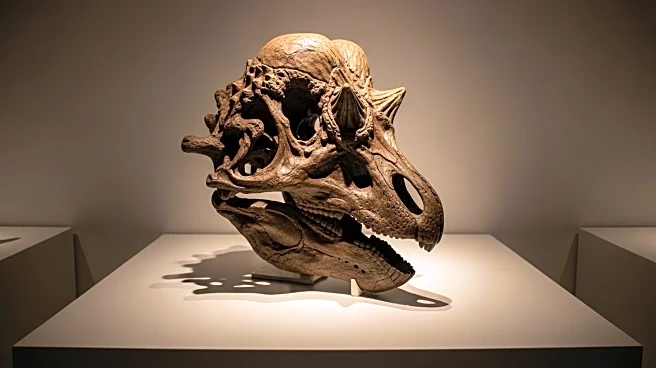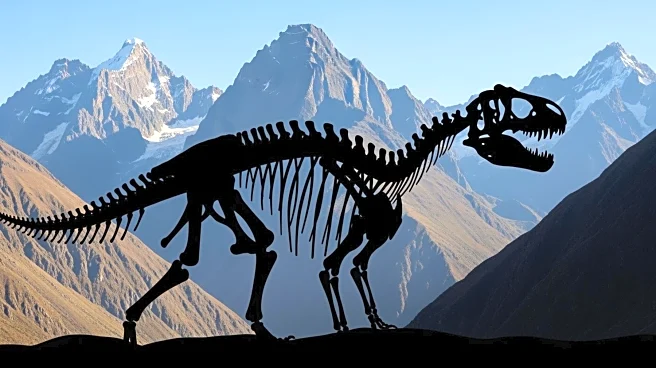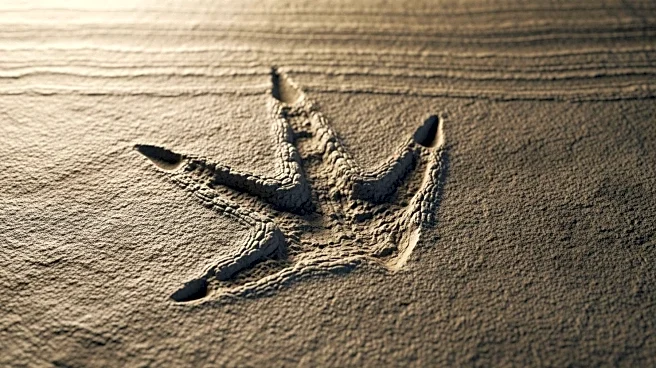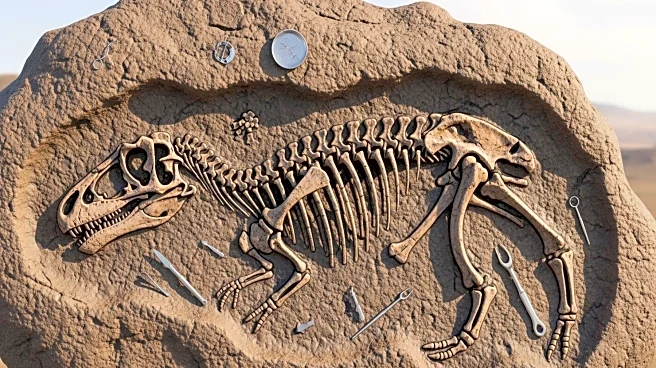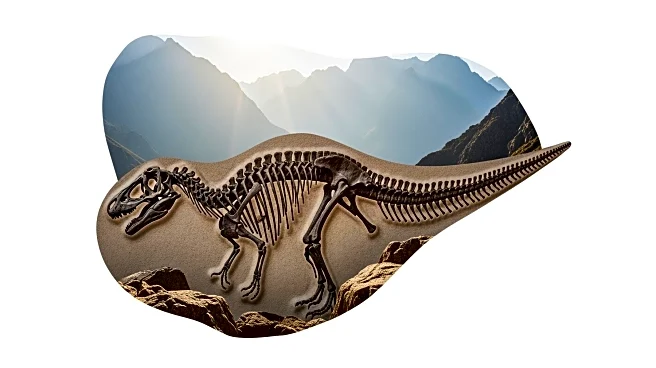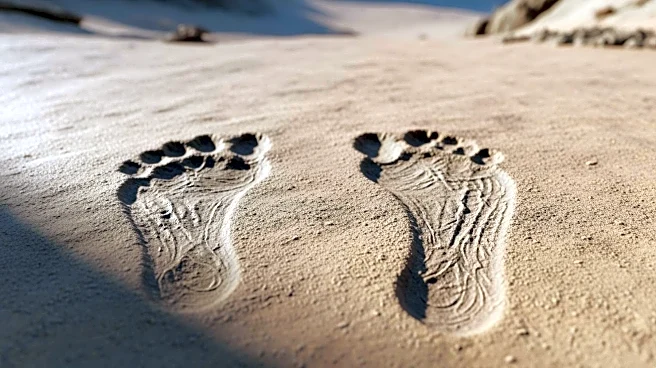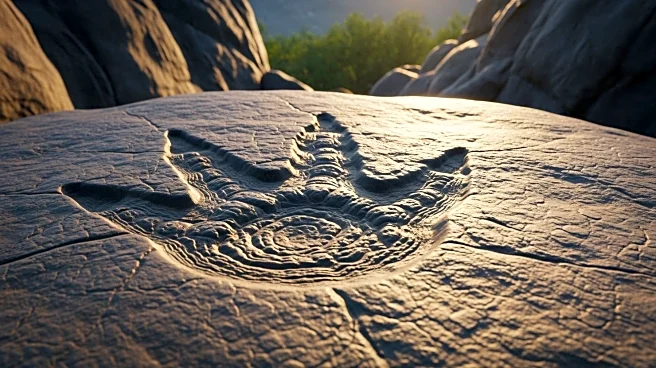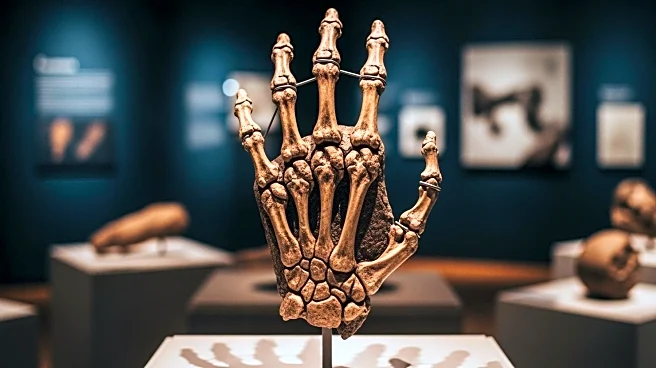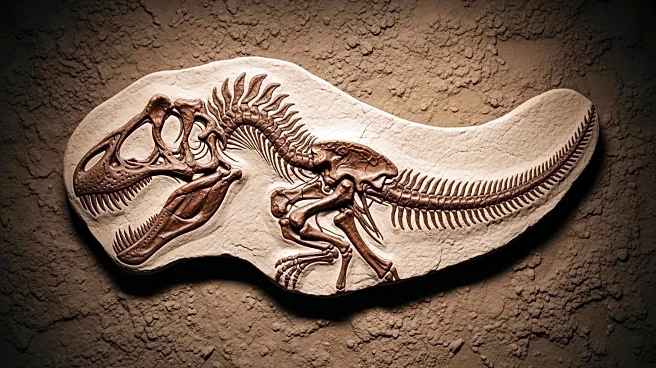What's Happening?
A team of paleontologists led by Chinzorig Tsogtbaatar has discovered a new species of pachycephalosaur in southern Mongolia, dating back to the early Cretaceous period, approximately 110 million years ago. This discovery is significant as it is the first definitive pachycephalosaur found from this era, making it 15 million years older than previously known specimens. The fossil, which includes a dome-shaped skull and other bones, is the most complete pachycephalosaur skeleton ever unearthed. The discovery provides new insights into the early evolution of these dinosaurs, known for their distinctive domed heads made of solid bone.
Why It's Important?
The discovery of this new pachycephalosaur species is crucial for understanding the evolutionary history of these unique dinosaurs. The completeness of the skeleton allows researchers to study features that were previously unknown, such as the tiny hand bones and the juvenile development of the dome. This could lead to new theories about their behavior, such as head-butting for territory or mates. The findings also highlight the importance of Mongolia as a rich site for paleontological research, potentially leading to further discoveries that could reshape our understanding of dinosaur evolution.
What's Next?
The research team plans to continue studying the fossil to uncover more details about the pachycephalosaur's lifestyle and behavior. The specimen, named Zavacephale rinpoche, is back in Mongolia, where it will be preserved and studied further. The discovery is expected to inspire new research into the pachycephalosaur lineage and prompt additional expeditions to Mongolia to search for more fossils that could provide further insights into the early Cretaceous period.
Beyond the Headlines
This discovery not only fills a gap in the evolutionary timeline of pachycephalosaurs but also raises questions about the ecological dynamics of the early Cretaceous period. The presence of a fully developed dome in juveniles suggests complex social behaviors that may have been present much earlier than previously thought. Additionally, the discovery underscores the ethical importance of preserving fossil sites and respecting the cultural significance of such finds in their native regions.
